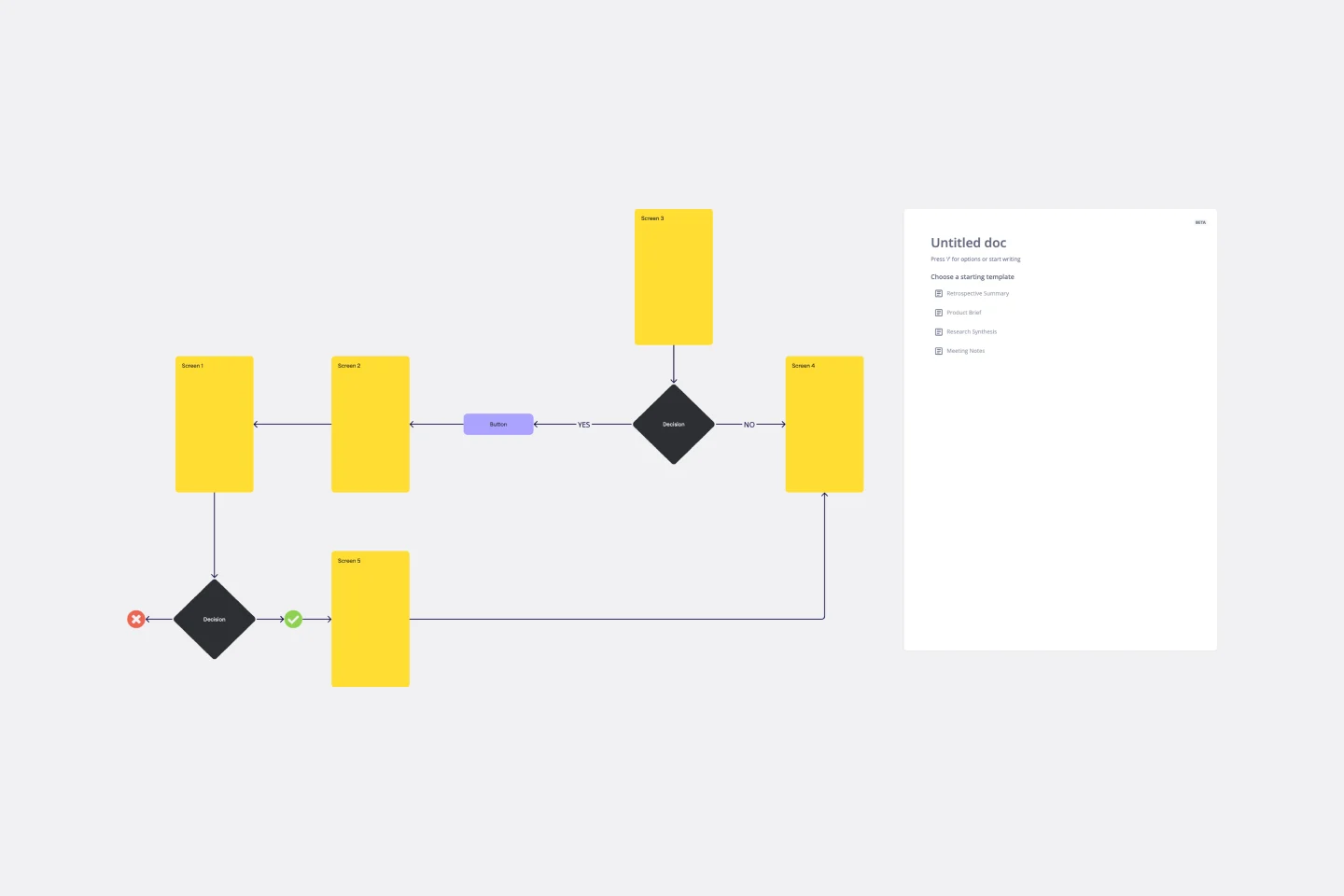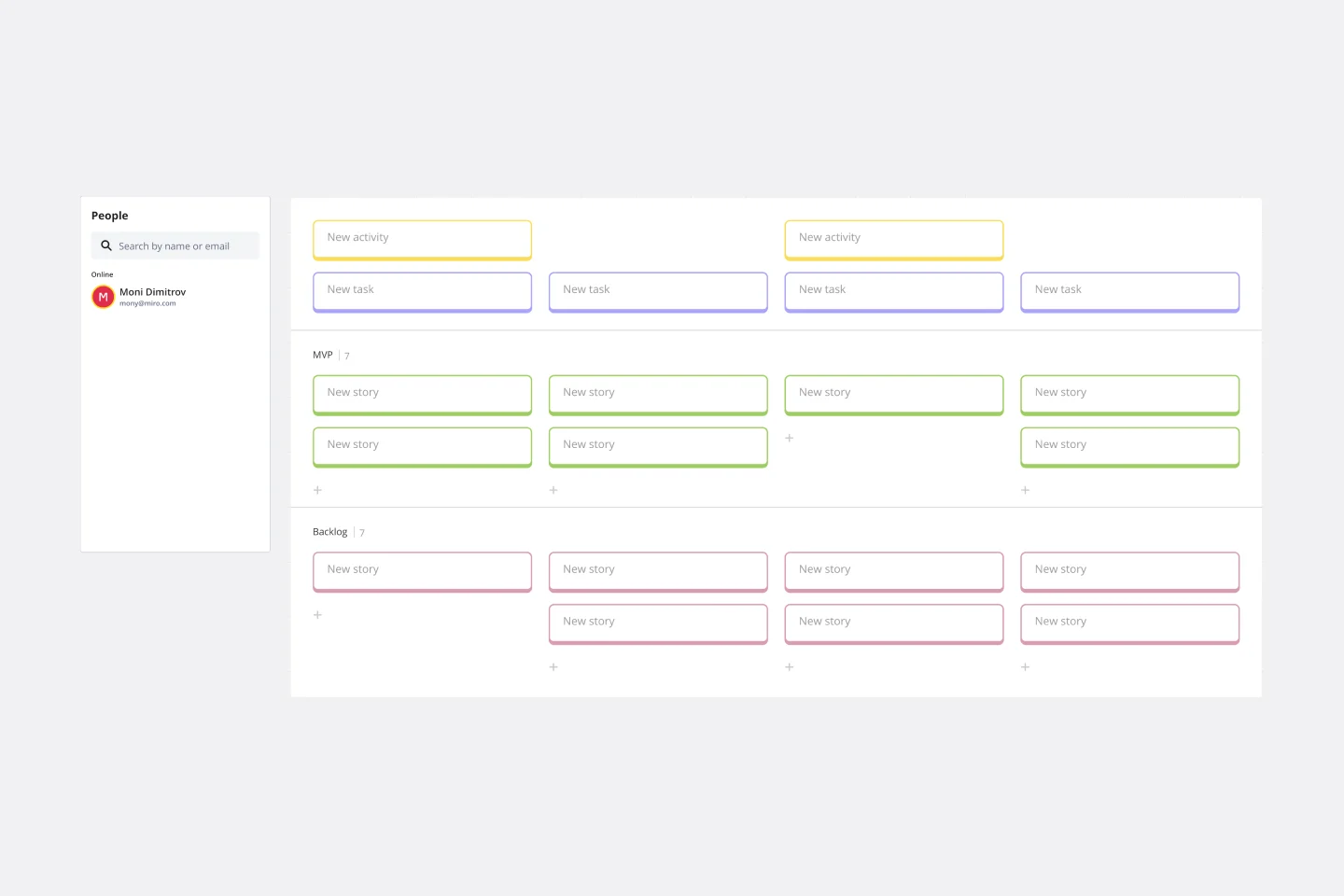About the User Story Templates Collection
User story templates are essential tools in Agile methodologies, helping teams articulate and prioritize work from the user's perspective. Our user story templates collection offers a display of user story templates designed to streamline creating, organizing, and managing user stories. These templates include the User Story Map Template, User Journey Map, and User Story Mapping with Walkthrough, each tailored to different aspects of user story creation and management.
Why you'll love our user story templates
Get inspired by our user story templates to simplify the process of understanding and implementing user stories in Agile projects. Here's why you'll love them:
Ease of use: Miro's intuitive interface makes it easy for teams to create and manage user stories without a steep learning curve.
Collaboration: Real time collaboration features allow team members to work together seamlessly, regardless of their location.
Visualization: Visual tools like the User Story Map Template help teams see the big picture and understand the flow of user stories.
Efficiency: Pre-built templates save time and ensure consistency across projects.
Flexibility: The user story templates can be customized to fit the specific needs of your project or team.
How to use the user story templates in Miro
Using Miro's user story templates is straightforward. Here's a step-by-step guide:
Access the template: Open Miro and navigate to the Templates section. Select the User Story Map Template, User Journey Map, or User Story Mapping with Walkthrough.
Customize the template: Adjust the template to fit your project's needs. Add or remove sections, change colors, and input your user stories.
Collaborate with your team: Invite team members to join the board. Use Miro's collaboration tools to discuss and refine user stories in real time.
Organize user stories: Arrange user stories in a logical order. Use the mapping features to visualize the user journey and identify dependencies.
Assign story points: Estimate the effort required for each user story by assigning story points. This helps in planning and resource allocation.
Track progress: Use Miro's tracking features to monitor the progress of each user story. Update the board as tasks are completed and new stories are added.
Tips for writing user stories in Agile
Writing effective user stories is crucial for Agile success. Here are some tips:
Focus on the user: Always write from the user's perspective. Use the format "As a [type of user], I want [goal] so that [reason]."
Keep it simple: User stories should be concise and clear. Avoid technical jargon and focus on the user's needs.
Prioritize: Not all user stories are created equal. Prioritize them based on their value to the user and the business.
Collaborate: Involve the whole team in writing and refining user stories. Different perspectives can help create more comprehensive stories.
Use acceptance criteria: Define clear acceptance criteria for each user story. This helps ensure that the story is complete and meets the user's needs.
Iterate and refine: User stories are not set in stone. Continuously review and refine them as the project progresses and more information becomes available.
Make it testable: Ensure that each user story can be tested. This helps in validating the implementation against the original requirements.
Use the INVEST Model: Ensure each story is Independent, Negotiable, Valuable, Estimable, Small, and Testable.
Review regularly: Hold regular backlog grooming sessions to review and update user stories to keep them relevant and aligned with project goals.
Using Miro's user story templates, teams can improve their Agile processes, ensuring efficient and effective delivery of valuable, user-centered products.












